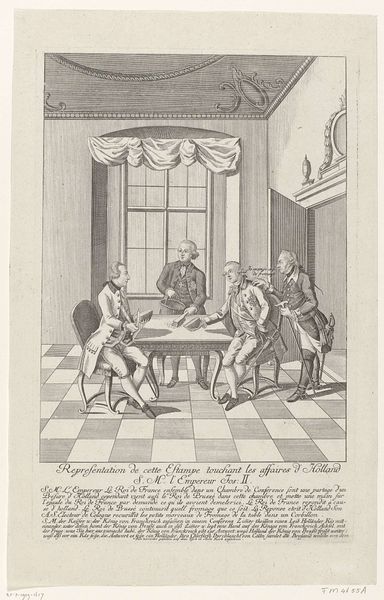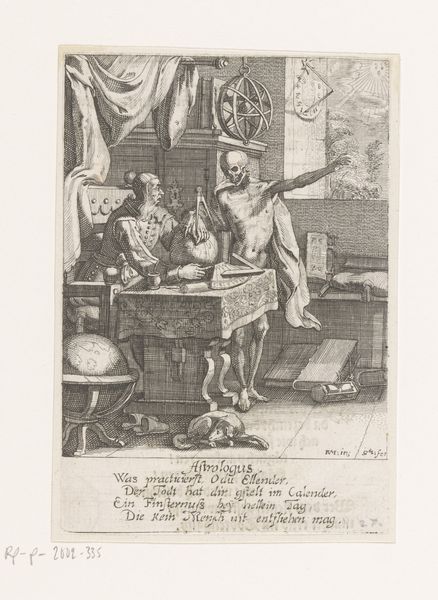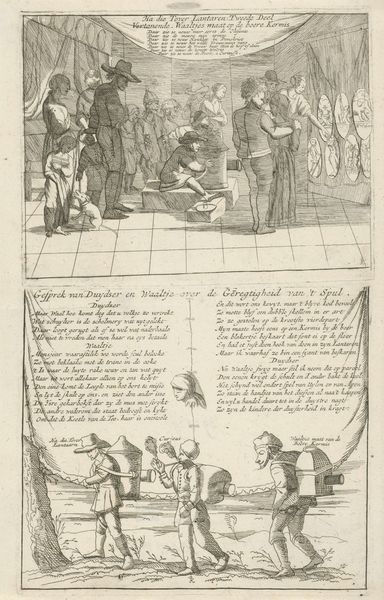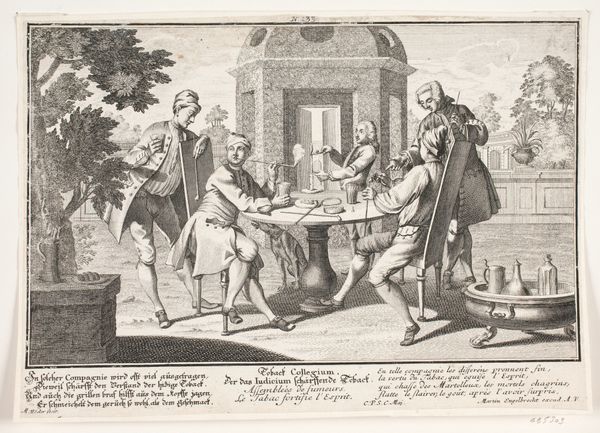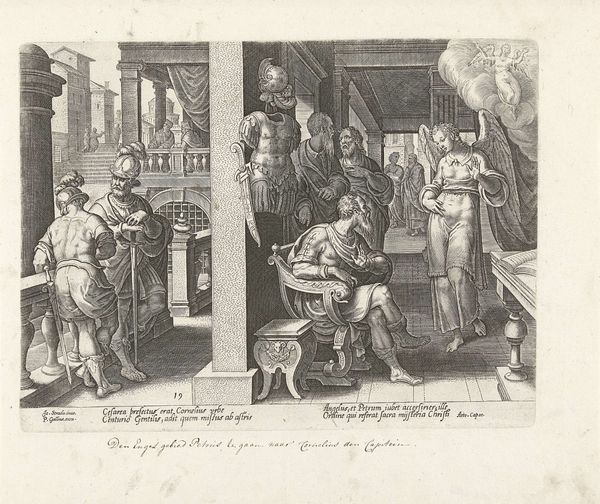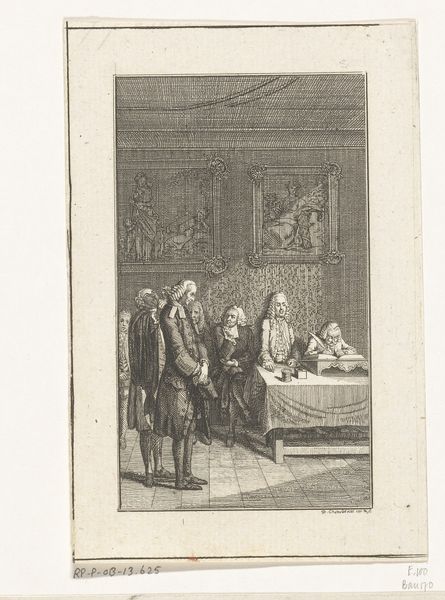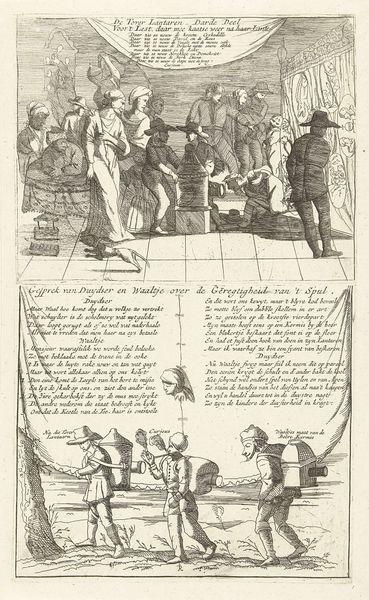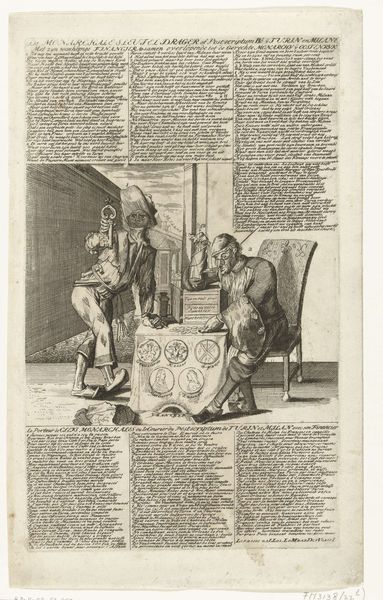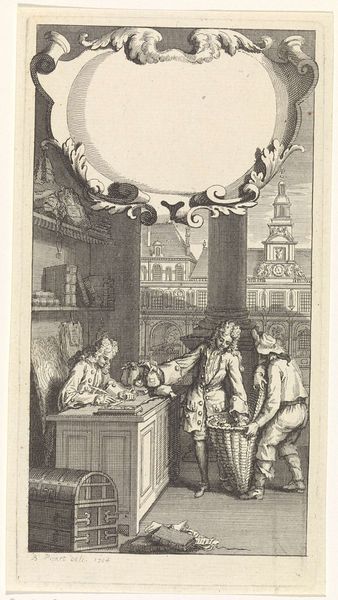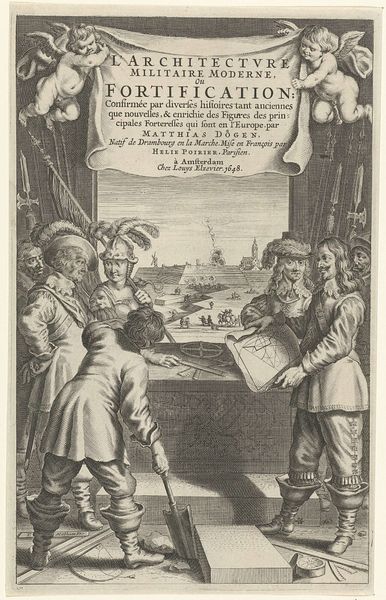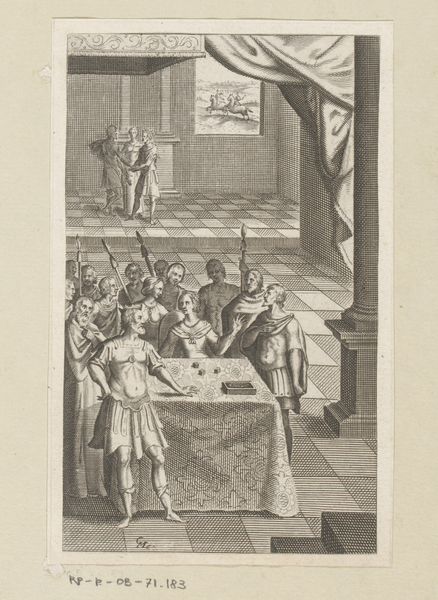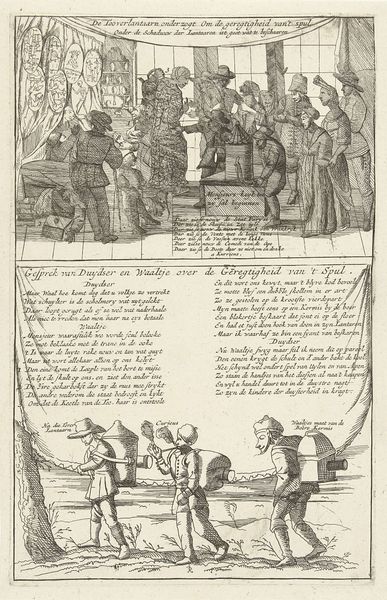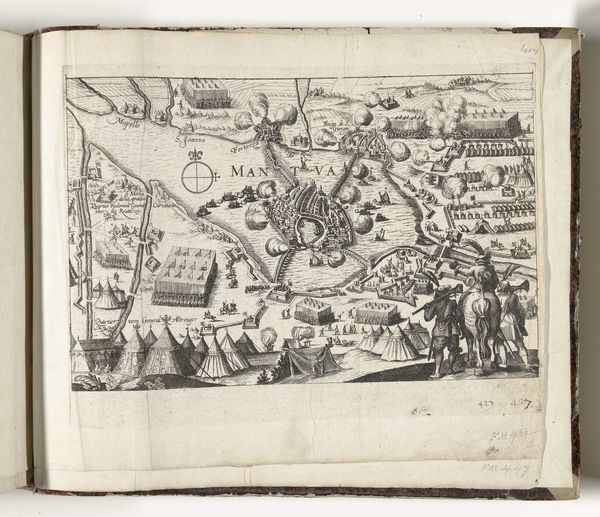
Dimensions: height 296 mm, width 196 mm
Copyright: Rijks Museum: Open Domain
Curator: This etching, made by an anonymous artist between 1785 and 1786, is held here at the Rijksmuseum. Its title translates to "Print on the Treaty of Fontainebleau, 1785." It offers a satirical take on the political climate concerning Holland. Editor: Immediately, I’m struck by the composition—the almost sterile room, the way the figures are posed, everything feels very staged, stiff, yet deliberately rendered to depict a rather animated scene. Curator: The print depicts several figures around a table, seemingly in deliberation. In the background, we see a map labeled "Plan von dem Schelde Fluss und der Stadt Antwerpen." The text beneath the image, in German and French, explains the context. Editor: So, the "Schelde Fluss" or Scheldt River map immediately suggests a point of conflict. Access and control were crucial for trade. Knowing the material context that printmaking was so important for mass distribution makes this feel especially potent, conveying quite political narratives. The checkered floor even adds to this chessboard of international affairs. Curator: Precisely. The Treaty of Fontainebleau aimed to settle disputes between the Holy Roman Emperor Joseph II and the Dutch Republic. What’s interesting is how the artist chooses to represent this complex political negotiation through caricature. Editor: And it's not just the caricature; look at the lines of the etching. They almost have a frenetic quality, heightening the tension and perhaps the artist's own anxieties about the situation's impact on Dutch society. I'm drawn to how accessible such a pointed perspective was in this format for public consumption. Curator: Indeed. The power of satire in print like this resides in its accessibility and capacity to shape public opinion. The artist critiques not just the political maneuverings but also the inherent power imbalances at play. This piece is a rich primary source reflecting attitudes and anxieties of its time. Editor: I agree. Considering this as an object produced within specific socioeconomic constraints really anchors its historical relevance and provides a vivid lens into those particular disputes, its circulation impacting broader social perceptions.
Comments
No comments
Be the first to comment and join the conversation on the ultimate creative platform.
